Praeger Security International
17 total works
Cyber-Threats, Information Warfare, and Critical Infrastructure Protection
by Anthony H. Cordesman and Justin G Cordesman
During the last two decades, the infrastructure of the U.S. economy has undergone a fundamental set of changes. It has steadily increased its reliance on its service sector and high-technology economy. The U.S. has come to depend on computers, electronic data storage and transfers, and highly integrated communications networks. The result is the rapid development of a new form of critical infrastructure--and one that is exceedingly vulnerable to a new family of threats, loosely grouped together as information warfare. This detailed volume examines these threats and the evolving U.S. policy response.
After examining the dangers posed by information warfare and efforts at threat assessment, Cordesman considers the growing policy response on the part of various federal agencies, state and local governments, and the private sector. The changing nature of the threats is leading these actors to reassess the role they must play in critical infrastructure protection. Government at all levels, industry, and even friendly and neutral foreign governments are learning that an effective response requires coordination in deterrence, defense, and counterattack.
Arab-Israeli Military Forces in an Era of Asymmetric Wars
by Anthony H. Cordesman
The reality of the Arab-Israeli balance now consists of two subordinate balances: Israel versus Syria and Israel versus the Palestinians. The book analyzes these two balances in detail and their impact on defense planning in each country and on the overall strategic risk to the region as a whole. It covers military developments in each of six states-Egypt, Israel, Jordan, Lebanon, Syria, and Palestine-and provides an analytical view with charts and tables of how the changing natures of the military and political threats faced by each is impacting its military force readiness and development. The book has the most comprehensive data on past, current, and future military force structure currently available, drawn from the widest range of sources.
Responding to the most recent of events in the region, this book is the first to deal with the effects on the Arab-Israeli military balance of the strategic uncertainty created by the Iraqi insurgency and the Iranian nuclear program. It also studies how the Gaza pullout, the Syrian withdrawal from Lebanon, the changing political landscape in Israel, and the threat of nuclear proliferation are having impacts on the Egyptian-Israeli and Jordanian-Israeli peace accords and the prospects for a settlement between the Palestinians and Israelis. The roles of Hezbollah, Hamas, and Palestinian Islamic Jihad are analyzed in light of the changing political landscape in both Israel and Palestine. Given the role of Syria in the Palestinian-Israeli affairs, the book also explores the ways that internal instability in Lebanon could escalate into a regional conflict.
This volume documents both the initial mistakes and the changes in U.S. policy that now offer real hope of success in Iraq. Although the United States understood neither the strategic situation in Iraq, nor the value of Iraqi military, security, and police forces in fighting the growing insurgency, the country undertook a series of policy changes in June 2004 that may well correct these mistakes and create the kind of Iraqi forces that are vital to both Iraq's future and any successful reduction in Coalition forces and eventual withdrawal from Iraq.
In this book, Cordesman sets a number of U.S. policy priorities that must be attained if Iraqi forces are to be created at anything like the levels of strength and competence that are required. He is convinced that pursuing the right program consistently and with the right resources may well succeed in solving the security aspects of the nation-building problem in Iraq. The history of U.S. efforts to create Iraqi forces is a warning that Americans at every level need to think about what alliance and cooperation mean in creating allied forces for this kind of nation building and warfare. Iraq is only one example of how vital a role such forces must play in many forms of asymmetric warfare. What is equally clear is that Americans must understand that they have a moral and ethical responsibility to the forces they are creating.
With continuing instability in Iraq, the threat of a nuclear Iran, and the ever-present reality of further terrorist attacks within its own borders, Saudi Arabia has been forced to make some hard decisions. The current structure of the Saudi security apparatus is only one pathway to improved security. Economic and demographic threats may well be the hardest hurdles to overcome. What has been accomplished since 2001 and what are the real prospects and implications of further reform? To what extent should the kingdom continue to rely on the US to protect its interests?
Cordesman and Obaid argue that it is time to put an end to client and tutorial relations. Saudi Arabia must emerge as a true partner. This will require the creation of effective Saudi forces for both defense and counterterrorism. Saudi Arabia has embarked on a process of political, economic, and social reforms that reflects a growing understanding by the governing members of the royal family, Saudi technocrats, and Saudi businessmen that Saudi Arabia must reform and diversify its economy and must create vast numbers of new jobs for its young and growing population. There is a similar understanding that economic reform must be combined with some level of political and social reform if Saudi Arabia is to remain stable in the face of change. With Gulf security, the war on terrorism, and the security of some sixty percent of the world's oil reserves at stake, the real question is how quickly Saudi Arabia can change and adapt its overall approach to security, and how successful it will be in the process.
The Israeli-Palestinian conflict is more than a local or regional dispute. Its ongoing and escalating nature increases the risk that the violence will spill over its present borders and contribute to both extremism and terrorism. While the Intifada from 1987 to 1993 was largely a popular uprising and a political struggle, the recent clash is a war with a steady escalation between conventional and unconventional forces. It is in the interest of all major powers, the international community, and the United Nations to press both sides to accept a realistic peace plan.
Noted Middle East expert Anthony Cordesman details this continuing struggle by explaining the issues at stake for each side; the various combatants (both directly and indirectly engaged); as well as the course of the war in its various incarnations. The situation on the ground is complex and the quest for peace is ever more uncertain. If the Intifada was a struggle for recognition that a peace had to be reached that was just for both sides, the Israeli-Palestinian War has polarized both sides away from peace, convincing them of the justice of their own cause and tactics and the fundamental injustice of the other side's tactics and goals. Each side has used human rights, international law, and civilian casualties as political weapons. The history of a near century of conflict is used to justify war rather than a search for peace.
Iranian Weapons of Mass Destruction
by Adam C. Seitz and Anthony H. Cordesman
This book provides an in-depth examination of the serious security implications that Iran's nuclear program has on a region that is already plagued by insecurity and conflict.
Iranian Weapons of Mass Destruction: The Birth of a Regional Nuclear Arms Race? is an expert insider's look at Iran's current and potential ability to wage both conventional and asymmetrical warfare, and the options available for dealing with a nuclear Iran.
Are we on the brink of a regional nuclear arms race in the Middle East? In this urgent volume, Anthony Cordesman and Adam Seitz examine how Iran's nuclear ambitions have already altered security policy for the United States, Iran's neighbors, and the international community. Cordesman and Seitz address the full range of issues related to Iran's quest for nuclear weapons, including its emphasis on medium- and long-range missiles, the decline of Iran's conventional military capabilities, and continued Iranian efforts to undercut the spread of democracy in the region.
- Offers hypothetical studies outlining the possible effects of specific nuclear, chemical, or biological attacks by Iran
- Presents a number of tables and graphs providing a quantitative and qualitative look at Iran's conventional and asymmetric warfare capabilities, as well as insight into the progress of Iran's nuclear and missile programs
Iraq's Insurgency and the Road to Civil Conflict [2 volumes]
by Anthony H. Cordesman and Emma R. Davies
The war in Iraq has expanded from a struggle between Coalition forces and the remnants of former regime loyalists to a multi-faceted conflict involving numerous Sunni groups, Shi'ite militias, Kurdish nationals, and foreign jihadists. Iraq's Insurgency and the Road to Civil Conflict is Anthony Cordesman's latest assessment of the Iraqi conflict and documents its entire evolution, from the history of ethnic tensions through the current U.S. surge. He identifies each actor in the arena, analyzes their motivations, and presents a detailed record of their actions, tactics, and capabilities. Cordesman's exhaustive study, based on meticulous research, is the most thorough account of the war to date.
Beginning with the consequences of imperial colonialism and touching upon the ethnic tensions throughout Saddam's regime, Cordesman examines and details the confluence of forces and events that have paved the way toward Iraq's current civil conflict. He analyzes major turning points, including elections, economic developments, and key incidents of violence that continue to shape the war. Finally, he outlines the lessons learned from this history and what can and cannot be done to stabilize the nation.
From grassroots terrorism to the nuclear ambitions of hostile nations, the United States faces increasingly complex threats to its national security. Combating these threats continues to demand a reshaping of the nation's security structure, military forces and defense expenditures. In this study, Anthony Cordesman offers a detailed analysis of critical challenges affecting U.S. national security and how failures in adapting to these challenges have exacerbated the strains on available resources. He systematically identifies the most glaring obstacles to successful national security planning and proposes constructive and practical ways to proceed in the future.
Cordesman focuses on ten specific challenges, and each is addressed within the context of the Iraq War, Afghan War, War on Terrorism, and the risk of conflict over the Taiwan Straits. Out of the lessons drawn from these experiences, he examines the future of international coalitions, asymmetric warfare, nation building, and stability operations, and concludes that perhaps the most pressing area for change is the need for accountability among civilian and military policymakers.
Israel and Syria
by Anthony H. Cordesman, Aram Nerguizian, and Inout C Popescu
Israel and Syria: The Military Balance and Prospects of War provides a detailed and current picture of the military capabilities of Israel and Syria, reflecting the changes and lessons of the Israel-Hezbollah War in 2006 and other recent conflicts. It offers extensive analysis, supported by tables and charts, on the trends in military spending, arms imports and technology transfers, military manpower, weapons, and orders of battle. By going beyond military balance analysis, Cordesman examines the probable nature and results of a future war and how the readiness, capability, tactics, and technology on each side would shape its outcome.
Israel and Syria: The Military Balance and Prospects of War shows how a dangerous new conflict between both nations would cripple all strides in strategic gains and Israeli-Syrian diplomacy. On the other hand, peace negotiations would offer a safer, more productive relationship. Israel and Syria need to consider the true nature of their military balance and the undermining effect to both nations as well as the costs and risks of any future conflict. Although Syria does retain important options in terms of asymmetric and proxy conflicts, it would fail in its attempt to recapture the Golan. While Israel would almost certainly win a future war, it cannot make gains from acquiring more Syrian territory and a new war would create major problems with its neighbors and in dealing with the Palestinians.
The risk of a new Israeli-Syrian conflict is so serious that both sides need to understand the true nature of their military balance, and the costs and risks of any future conflict. Israel and Syria: The Military Balance and Prospects of War shows how dangerous a new conflict could be, that neither side can make lasting strategic gains from a future conflict, and that peace negotiations offer a far safer and more productive option. It provides a detailed and current picture of the military capabilities of Israel and Syria, reflecting the changes and lessons of the Israel-Hezbollah War in 2006 and other recent conflicts. Israel and Syria: The Military Balance and Prospects of War provides extensive analysis, supported by tables and charts, on the trends in military spending, arms imports and technology transfers, military manpower, weapons, and orders of battle. By going beyond military balance analysis, Cordesman examines the probable nature and results of a future war and how the readiness, capability, tactics, and technology on each side would shape its outcome.
Iran's Military Forces and Warfighting Capabilities
by Anthony H. Cordesman and Martin Kleiber
Nations around the world are uncertain and anxious about Iran's intentions in the Middle East and the wider global arena. Its current president, Mahmoud Ahmadinejad, has made no secret of his opposition to Western society, particularly Israel, and his desire to acquire nuclear weapons. However, as Anthony H. Cordesman and Martin Kleiber point out, Ahmadinejad does not necessarily speak for the Iranian clerical regime, who operate in a cloud of secrecy and also directly control Iran's military. Given the ambiguous nature of Iran's global objectives, this new study focuses on the tangible aspects of Iran's military forces and takes an objective look at the realistic threats that Iran poses to the region and the world. The authors systematically assess each aspect of Iranian military forces from their conventional armies to their asymmetric threat via proxy wars in the region.
Much attention in national security debates is paid to Iran's intentions without first understanding its capabilities. Lacking such a fundamental understanding, much of this speculation tends to be wasted and irrelevant to what could actually happen in the event of a conflict. Cordesman and Kleiber's study provides, in meticulous detail, a basis for understanding the realistic threat that Iran poses to the Northern Gulf.
Terrorism, Asymmetric Warfare, and Weapons of Mass Destruction
by Anthony H. Cordesman
There is a wide spectrum of potential threats to the U.S. homeland that do not involve overt attacks by states using long-range missiles or conventional military forces. Such threats include covert attacks by state actors, state use of proxies, independent terrorist and extremist attacks by foreign groups or individuals, and independent terrorist and extremist attacks by residents of the United States. These threats are currently limited in scope and frequency, but are emerging as potentially significant issues for future U.S. security. In this comprehensive work, Cordesman argues that new threats require new thinking, and offers a range of recommendations, from expanding the understanding of what constitutes a threat and bolstering Homeland defense measures, to bettering resource allocation and improving intelligence gathering and analysis.
No pattern of actual attacks on U.S. territory has yet emerged that provides a clear basis for predicting how serious any given form of attack might be in the future, what means of attack might be used, or how lethal new forms of attack might be. As a result, there is a major ongoing debate over the seriousness of the threat and how the U.S. government should react. This work is an invaluable contribution to that debate.
Proliferation poses a broad range of threats to the United States, as well as to our allies and coalition partners. Intercontinental missiles armed with weapons of mass destruction are one of these threats, and it has become obvious that rogue nations such as Iran and North Korea may be acquiring the capability to build such missiles as well as the ability to arm them with nuclear or lethal biological weapons. While such threats are now only potential ones, these shifts in technological and manufacturing capability mean that these rogue nations may be able to pose serious dangers to the American homeland, possibly as early as during the next five years. Cordesman argues that an effective defense against these threats will require linking an effective national missile defense program to an ambitious counterproliferation strategy, a strengthened homeland defense program, and a realistic approach to arms control and national security options.
Cordesman argues that these threats may create a near- to mid-term need for national missile defense (NMD), widely discussed during the Clinton Administration and which seems to be emerging as a priority for the Bush Administration. This work analyzes the options available to the United States and how they relate to the delicate balance of deterrence in the post-Cold War era. As the debate on NMD escalates, this work could not be more timely.
Gulf Military Forces in an Era of Asymmetric Wars
by Anthony H. Cordesman and Khalid R. Al-Rodhan
The significance of the Persian Gulf to international peace and security and to the global energy market cannot be overstated. Events such as the attacks of September 11 and the rise in energy demand and prices have only highlighted the importance of stability in the Gulf to the health of the global economy. This book demonstrates that the nature of military and political threats in the Gulf states (Bahrain, Saudi Arabia, Iran, Iraq, Qatar, Yemen, and the UAE) has shifted during the past three years. Although the threat from Saddam Hussein's Iraq, which produced three recent, major conventional wars-Iran-Iraq (1980-88), Persian Gulf (1990), and Iraq (2003)-has largely disappeared, it has been replaced by concerns over the asymmetric warfare conducted by terrorist organizations and over the proliferation of WMDs by both states and terrorists. These developments are affecting the defense planning and strategic posture of each country, and this book analyzes developments in the force structures of the Gulf states and their ability to deal with this shift in the nature of threat.
The military and security forces of the Gulf states must evolve to adapt to the changing nature of the threat and take into account the risk of the Iraqi insurgency and the uncertainty surrounding Iraq's future. The key areas covered in this book include the internal terrorist threat to Saudi Arabia and the Gulf states; the impact of Iran's nuclear program and the risk it poses to energy and internal security in the Gulf area; and border disputes within the region that could develop into conflict. In addition, the book studies the impact of the Iraq War on regional security and the fear of the insurgency spilling over into neighboring states. Cordesman and Al-Rodhan demonstrate a shift toward using internal security services to deal with the threat of extremism and asymmetric warfare. They also suggest that high energy prices and export revenues provide the Gulf countries the opportunity to upgrade their military forces and deal with their undercapitalization as a result of low oil prices in the 1990s. Moreover, they insist that the future of Iraq, the strategic and nuclear posture of Iran, and the terrorist threat will remain major risks and uncertainties in the short to medium run.
Gulf Military Forces in an Era of Asymmetric Wars [2 volumes]
by Khalid Al-Rodhan and Anthony H. Cordesman
The significance of the Persian Gulf to international peace and security and to the global energy market cannot be overstated. Events such as the attacks of September 11 and the rise in energy demand and prices have only highlighted the importance of stability in the Gulf to the health of the global economy. This book demonstrates that the nature of military and political threats in the Gulf states (Bahrain, Saudi Arabia, Iran, Iraq, Qatar, Yemen, and the UAE) has shifted during the past three years. Although the threat from Saddam Hussein's Iraq, which produced three recent, major conventional wars-Iran-Iraq (1980-88), Persian Gulf (1990), and Iraq (2003)-has largely disappeared, it has been replaced by concerns over the asymmetric warfare conducted by terrorist organizations and over the proliferation of WMDs by both states and terrorists. These developments are affecting the defense planning and strategic posture of each country, and this book analyzes developments in the force structures of the Gulf states and their ability to deal with this shift in the nature of the threat.
The military and security forces of the Gulf states must evolve to adapt to the changing nature of the threat and take into account the risk of the Iraqi insurgency and the uncertainty surrounding Iraq's future. The key areas covered in this book include the internal terrorist threat to Saudi Arabia and the Gulf states; the impact of Iran's nuclear program and the risk it poses to energy and internal security in the Gulf area; and border disputes within the region that could develop into conflict. In addition, the book studies the impact of the Iraq War on regional security and the fear of the insurgency spilling over into neighboring states. Cordesman and Al-Rodhan demonstrate a shift toward using internal security services to deal with the threat of extremism and asymmetric warfare. They also suggest that high energy prices and export revenues provide the Gulf countries the opportunity to upgrade their military forces and deal with their undercapitalization as a result of low oil prices in the 1990s. Moreover, they insist that the future of Iraq, the strategic and nuclear posture of Iran, and the terrorist threat will remain major risks and uncertainties in the short to medium run.
The Changing Dynamics of Energy in the Middle East [2 volumes]
by Khalid Al-Rodhan and Anthony H. Cordesman
The recent rise in global demand for energy and the resulting spike in energy prices have illustrated just how important Middle Eastern energy exports are. This book, the first on the subject since the hike in energy prices impacted the global energy market, outlines the current facts that shape the ability of Middle Eastern producers to supply energy exports. It explores the possible future causes both of major interruptions in supply, and of failures to maintain and expand export capacity, and, though it does not predict a major energy crisis, it does describe a range of factors that could produce one.
The recent rise in global demand for energy and the resulting spike in energy prices have illustrated just how important Middle Eastern energy exports are. This book, the first on the subject since the hike in energy prices impacted the global energy market, outlines current facts that shape the ability of Middle Eastern producers to supply energy exports. It explores the possible future causes both of major interruptions in supply, and failures to maintain and expand export capacity, and, though it does not predict a major energy crisis, it does describe factors that could produce one.
Authors Cordesman and Al-Rodhan analyze the plans of each country in the region, compare those plans with the forecasting models of international organizations, and study each country's prospects for stability. They also analyze how importing countries such as the United States, Europe, China, and India are dealing with the changing nature of global dependence upon MENA oil.
Offering the most comprehensive data on current energy resources, production capacities estimates, import dependence, and national plans and strategies, The Changing Dynamics of Energy in the Middle East analyzes current energy modeling, and shows how the lack of supply-driven models has had a negative impact on the understanding of policy makers and strategic thinkers. The book concludes its analysis with possible strategic, economic, and demographic scenarios for the Middle East, projecting the impact of each scenario on future energy developments.
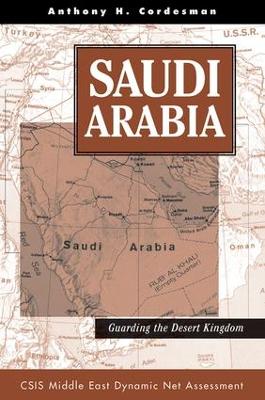

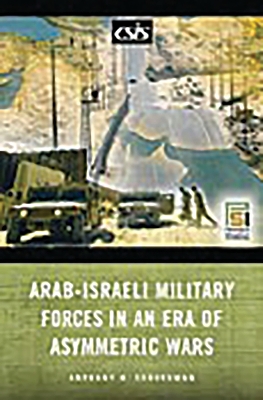
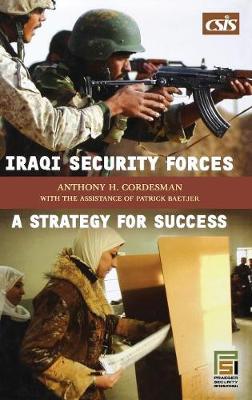
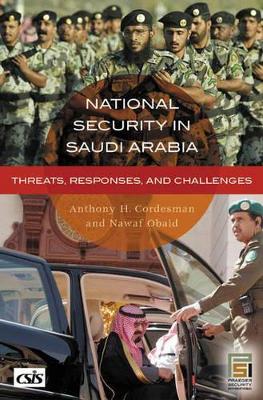
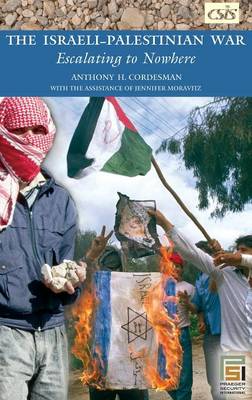
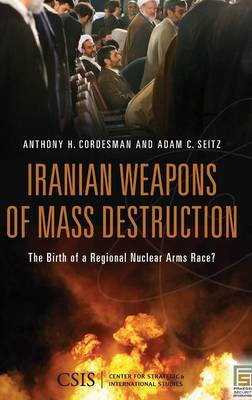
![Cover of Iraq's Insurgency and the Road to Civil Conflict [2 volumes]](https://images.bookhype.com/covers/8d/a2/91575627-7f09-4d92-bcc5-00a0a6d72ad8/9780313349973-f719daa00d9399233b1066.jpg)

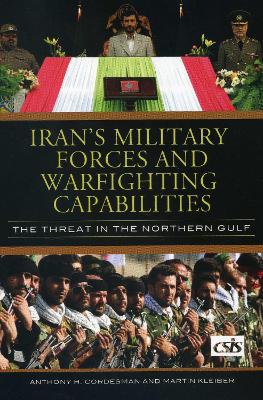
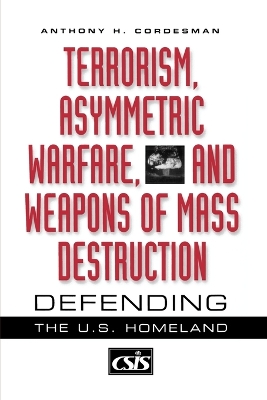
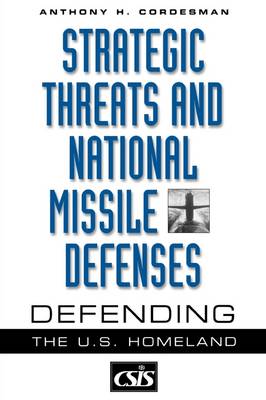

![Cover of Gulf Military Forces in an Era of Asymmetric Wars [2 volumes]](https://images.bookhype.com/covers/02/30/91576f77-5f7e-4d07-a30f-2345dd710320/9780275992507-36a1549c01c49cc9a4bf56.jpg)
![Cover of The Changing Dynamics of Energy in the Middle East [2 volumes]](https://images.bookhype.com/covers/7a/5d/91576f7b-787c-4b6b-9a40-695e825ad5a7/9780275991883-34ffa91413a62402bdcec8.jpg)
